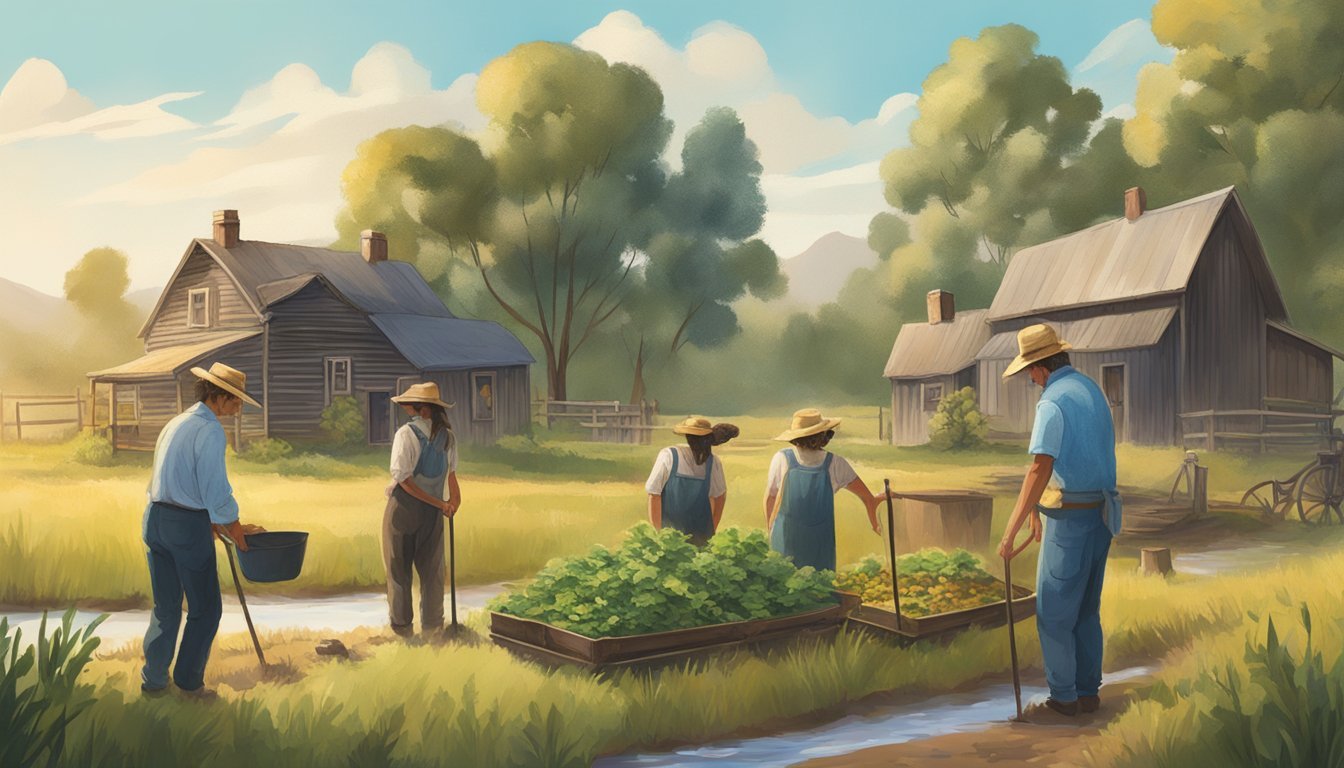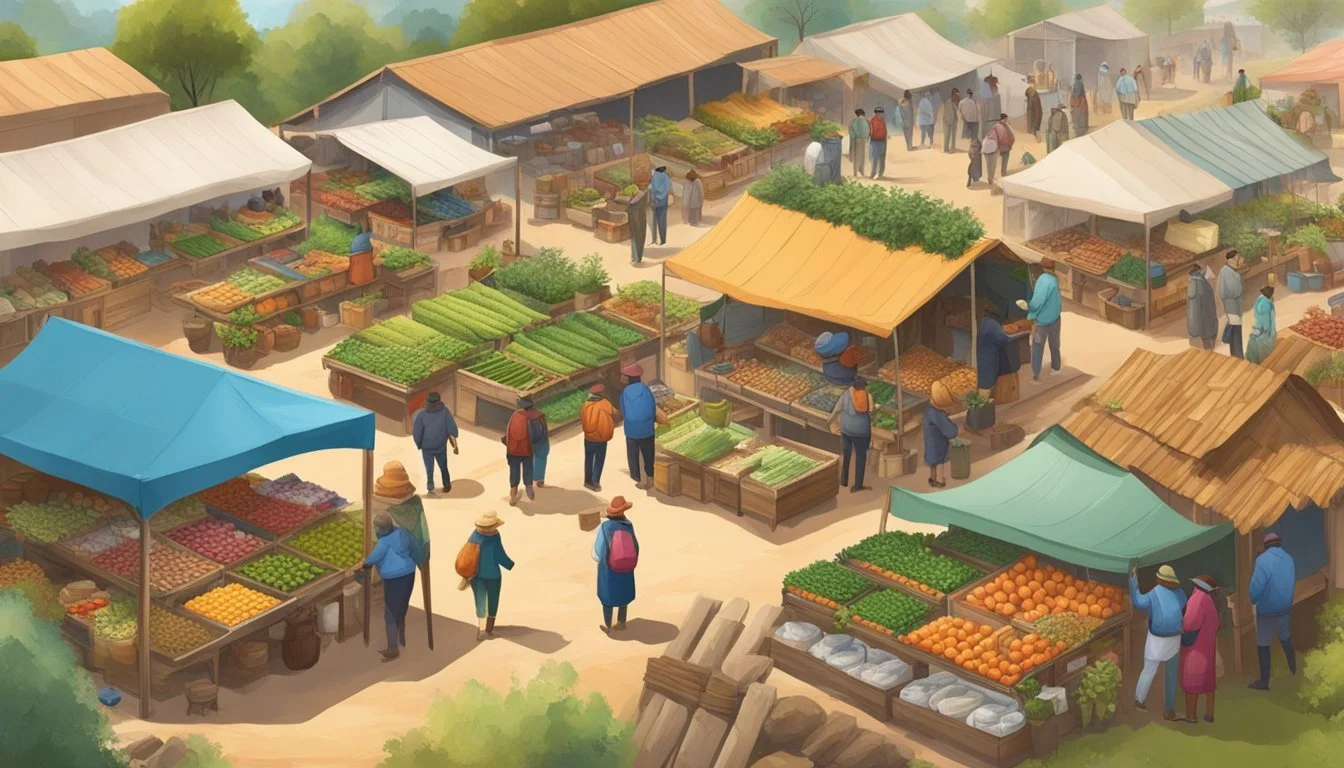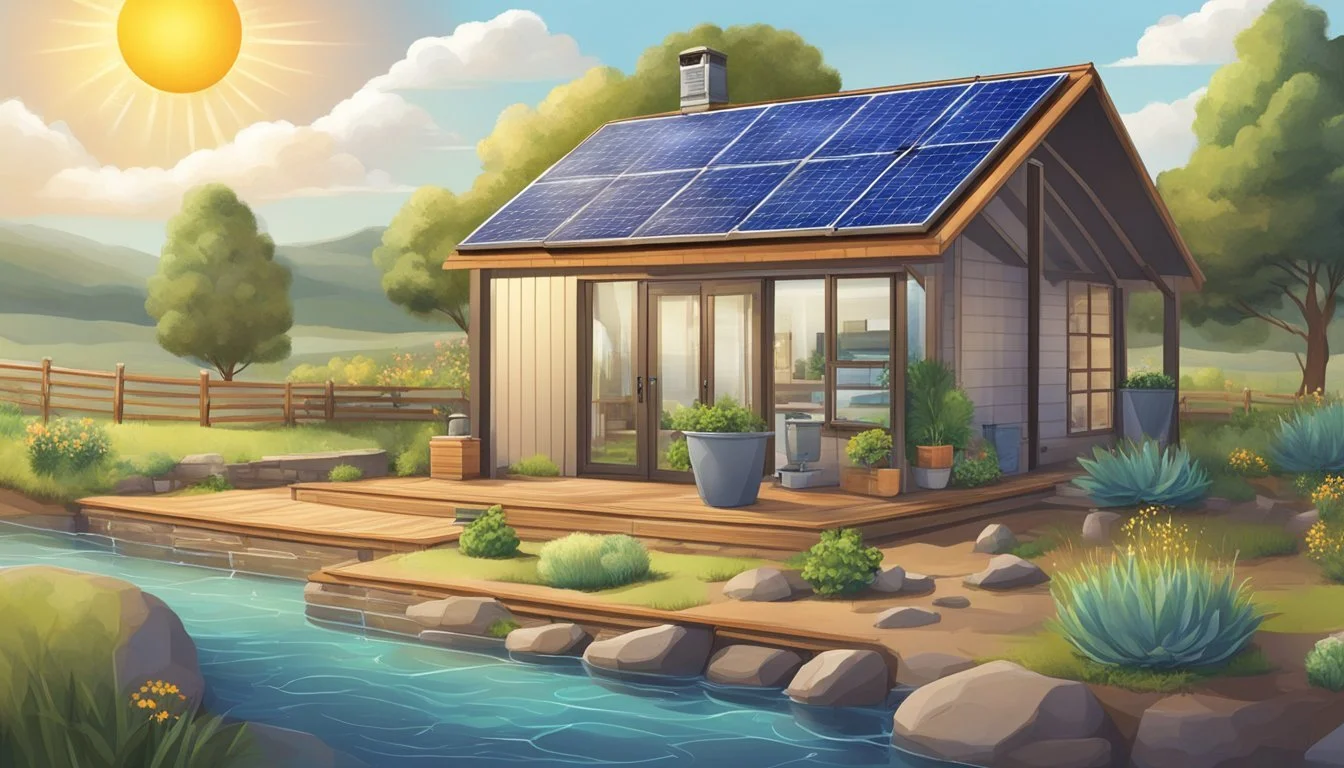The Impact of Climate Change on Homesteading Practices
Adapting for Sustainability
Climate change is redefining the landscape of agriculture, with homesteading practices at the forefront of experiencing these shifts. Homesteaders are individuals or families pursuing a self-sufficient lifestyle, often relying on their land to produce food, energy, and other necessities. As global weather patterns become more erratic and temperatures rise, the strategies for maintaining sustainable homesteads are being tested. Homesteaders must evaluate and sometimes overhaul their traditional methods of farming and land management to ensure both sustainability and resilience in the face of these challenges.
The adaptation to climate change is imperative for homesteaders, involving the integration of climate-smart practices into their routine. This might mean diversifying crops to include those that are more drought-resistant or altering planting schedules to suit new seasonal norms. In addition, water conservation techniques and soil health management are becoming essential components of a resilient homestead. These practices not only facilitate adaptation to immediate weather changes but also contribute to mitigation efforts by promoting biodiversity and reducing greenhouse gas emissions.
With the future in mind, homesteaders are looking towards innovative agricultural practices to buffer against the volatility of climate change. Examples of these include integrating Climate Farming Practices which are vastly different from conventional methods, or considering managed retreat to more sustainable locations. These adaptations are not just transformative on an individual level but can have significant impacts when collectively implemented by the homesteading community and beyond.
Understanding Climate Change
Before delving into homesteading practices, it's essential to grasp the fundamentals of climate change, the scientific principles of global warming, the role of greenhouse gases, and the key indicators that signal changes in our environment.
The Science of Global Warming
Global warming refers to the long-term heating of Earth’s climate system observed since the pre-industrial period due to human activities, particularly fossil fuel burning, which increases heat-trapping greenhouse gas levels in Earth's atmosphere. This warming is primarily attributable to the enhanced greenhouse effect caused by increased levels of carbon dioxide (CO2), methane (CH4), and other greenhouse gases.
Greenhouse Gas Emissions and Their Impact
Greenhouse gases, such as carbon dioxide, methane, and nitrous oxide, trap heat in the atmosphere and regulate our climate. These gases are released through everyday activities like burning fossil fuels for electricity, transportation, and industry. Carbon emissions from vehicles and factories are some of the most significant contributors to this phenomenon, while methane emissions from agriculture and waste management also play a key role. The effect of these emissions is a gradual increase in Earth's average surface temperature, leading to various environmental changes.
Key Climate Change Indicators
Several indicators have been identified to monitor and understand the consequences of climate change:
Temperature Changes: A steady increase in global surface temperatures is a clear indicator of global warming.
Oceanic Changes: Rising ocean temperatures, sea level, and acidity signify shifting climate patterns, as explained by the Basics of Climate Change from the US EPA.
Melting Ice: Diminishing glaciers and polar ice caps are both a result of and a contributor to further global warming.
These indicators are critical in assessing the health of our planet and the impact of human activity on the environment. By understanding them, it becomes clear that climate change is an omnipresent issue needing immediate and sustained attention.
Adapting Homesteading Practices
Climate change compels homesteaders to adapt traditional agricultural practices, focusing on long-term sustainability. Adapting to a changing environment involves enhancing soil health, efficient water usage, and incorporating renewable energy.
Soil Health and Management
Soil health is foundational to productive homesteading. Adapting practices such as composting can improve soil structure, thereby increasing water retention and providing essential nutrients. Utilizing cover crops and implementing crop rotation systems can also prevent soil depletion, improving soil health and reducing erosion.
Water Conservation Techniques
With climate change impacting water availability, conserving water becomes critical. Mulching reduces water consumption by limiting evaporation, while drip irrigation systems deliver water directly to plant roots, enhancing efficiency. Capturing and storing rainwater can augment water supply during dry periods, ensuring continuous plant growth.
Incorporating Renewable Energy
Homesteads can integrate renewable energy such as solar, wind, and small-scale hydro systems to power operations. Solar panels can be particularly effective in generating electricity and heating water without relying on fossil fuels. Wind turbines might be suitable for certain locations, while micro-hydro generators can harness energy from streams, contributing to energy conservation on the homestead.
Biodiversity and Ecosystem Management
The resilience of homesteading practices hinges on effective biodiversity and ecosystem management, incorporating strategies to promote pollinators, conserve species variety, and ensure sustainable coexistence with wildlife.
Promoting Pollinators and Plant Diversity
Homesteaders play a pivotal role in bolstering biodiversity by nurturing pollinator populations and cultivating a wide array of plants. Pollinators like bees, butterflies, and birds are crucial for the reproduction of many plant species and the health of ecological networks. Strategies for support include planting native flowers and creating habitats free of pesticides. Research underscores the importance of extensive and connected ecosystems in buffering climate change impacts, emphasizing where plant and genetic diversity contribute to trophic intactness and habitat variety.
Conservation and Restoration Initiatives
Adopting conservation and restoration initiatives on homesteads helps preserve essential ecosystem services and safeguards biodiversity. Initiatives range from setting aside portions of land as conservation habitats to engaging in ecological restoration projects that restore native trees and forests. Such efforts can shore up ecosystems against climate-induced shifts and foster the resilience of regional resources. Conservation methods are also key in limiting the spread of invasive species and maintaining ecosystem functions.
Homesteading and Wildlife Coexistence
A strategic approach to land use on homesteads includes measures that promote wildlife coexistence, balancing human needs with ecological sustainability. Homesteaders can deploy non-intrusive fencing, establish corridors linking fragmented habitats, and preserve critical areas like wetlands and forest margins. This not only supports diverse animal species but also contributes to an integrated ecosystem management approach that accommodates the dynamic interaction between biodiversity, ecosystems, and agriculture.
Climate Change Mitigation Strategies
Climate change mitigation involves adopting practices that reduce greenhouse gas emissions and enhance carbon sequestration. Homesteaders can significantly contribute to these efforts through conscious lifestyle choices, stewardship of their land, and optimizing energy use.
Reducing Carbon Footprint through Lifestyle
Changing personal habits plays a crucial role in mitigating climate change. Homesteaders can reduce their carbon footprint by choosing local and organic foods, thus minimizing the emissions associated with transportation and synthetic fertilizers. Embracing the principles of reduce, reuse, and repair limits waste and reduces the need for new materials, further diminishing the overall impact on the environment.
Sustainable Land Management
Effective land management practices can significantly enhance carbon sequestration, the process by which carbon dioxide is taken from the atmosphere and stored in the soil. Techniques such as agroforestry, which integrates trees with crops or livestock, not only captures carbon but also aids in preventing soil erosion and improving biodiversity. Similarly, no-till farming and the use of cover crops can improve soil health, leading to more carbon retention and less atmospheric CO2.
Energy Efficiency and Conservation
To combat climate change, energy efficiency and conservation are vital strategies on homesteads. This includes the use and regular maintenance of energy-efficient appliances, proper insulation of buildings, and utilizing renewable energy sources when possible, such as solar or wind power. These measures not only reduce greenhouse gas emissions but can also lower energy costs, making them both sustainable and economically beneficial for homesteaders.
Economic Considerations and Funding
Understanding the economic realities and support structures is crucial for those looking to adapt homesteading practices in the face of climate change. This includes exploring various sources of investment, evaluating governmental funding options, and considering the role of entrepreneurship in fostering economic resilience.
Investment in Sustainable Homesteading
To mitigate the effects of climate change, investment in sustainable homesteading is essential. This includes both financial and resource-based investments, such as acquiring renewable energy systems and sustainable farming equipment. Such investments often lead to reduced long-term costs and improved self-sufficiency, making homesteading practices more viable and environmentally friendly.
Federal and Local Government Support
The federal government has shown support for climate-smart agricultural practices by making available substantial funds, like the historic $3 billion for climate-smart practices aimed at enhancing sustainable land use. On the local level, government initiatives often provide grants and educational resources tailored to the unique needs of regional homesteaders, ensuring that funding aligns with the most effective sustainability efforts.
Entrepreneurship and Economic Resilience
Entrepreneurship plays a pivotal role in integrating innovative, climate-smart solutions into homesteading. Entrepreneurs often spearhead the development of new products and methods that can lead to increased economic resilience. By creating businesses around sustainable practices, they not only contribute to the local economy but also establish models for economically sustainable homesteading that others can replicate.
Community and Cultural Impacts
The intersection of climate change with homesteading practices has profound effects on community dynamics and cultural traditions. It necessitates adaptive collaborations, local initiatives, and global agreements to mitigate its impact.
Collaboration with Indigenous Peoples
Indigenous peoples have a rich history of sustainable living and land stewardship, making their collaboration crucial. Projects like the Climate Change Prevention through Community Actions and Empowerment integrates local knowledge with modern techniques to address environmental challenges. Understanding and respecting indigenous practices can lead to more resilient homesteading methods.
Rural and Local Community Initiatives
Local communities, especially in rural areas, are implementing diverse strategies to adapt to climate change. For instance, the promotion of climate-smart agriculture and renewable energy use in homesteading enhances both sustainability and self-sufficiency. Support from entities such as Transforming places together: transformative community strategies fosters innovation and resilience among local practices.
Global Community and International Agreements
The global community recognizes the importance of cohesive action, as outlined in international agreements like the Paris Agreement. These accords include aims to limit global warming and support sustainable practices across various cultures and borders. Homesteading, influenced by worldwide consensus, can contribute to these goals through community-led environmental actions and adherence to international guidelines.
Resilience in the Face of Extremes
In homesteading, resilience against climate extremes is a critical part of ensuring sustainability and safety. Careful planning and adaptable practices are key for managing the effects of drought, storms, sea level rise, and wildfires.
Dealing with Drought and Water Scarcity
Homesteaders must develop strategies for water conservation and efficient usage to combat drought. They can implement rainwater harvesting systems to collect and store water during rainy periods. Using drip irrigation conserves water by delivering it directly to plant roots, while mulching reduces evaporation rates from soil.
Rainwater harvesting: Collecting runoff from rooftops and storing it.
Drip irrigation: Delivers water to each plant, minimizing waste.
Soil mulching: Retains soil moisture and improves its quality.
Preparing for Storms and Sea Level Rise
Strategies for dealing with storms involve reinforcing structures and securing essential resources. In areas prone to sea level rise, elevated foundations can protect homes. Establishing barrier vegetation helps to mitigate the impact of storm surges and coastal erosion.
Structure reinforcement: Upgrading buildings to withstand high winds.
Elevated foundations: Raising homesteads, particularly in flood-prone zones.
Barrier vegetation: Planting native species along coastlines to form natural barriers.
Responding to Wildfires and Natural Disasters
To defend against wildfires, homesteaders should create defensible space around their property and use fire-resistant building materials. Emergency plans, including evacuation routes and communication strategies, must be established.
Defensible space: Clearing vegetation and combustible materials around structures.
Fire-resistant materials: Building with substances that can help protect against fires.
Emergency plans: Preparedness procedures in the event of a natural disaster.
Technological and Innovative Approaches
In the context of homesteading, leveraging technology and innovation is critical. These advancements aid in constructing sustainable homes, revamping transportation, and optimizing energy usage to mitigate climate impacts.
Smart Homes and Sustainable Housing
Smart homes integrate technology to reduce energy consumption and automate systems for optimal efficiency. Energy-efficient appliances, intelligent thermostats, and automated lighting are just the tip of the iceberg. Sustainable housing also prioritizes materials and designs that are environmentally friendly, such as the use of recycled or locally sourced materials.
Energy Monitoring: Devices that track and manage energy use in real-time.
Materials: Use of sustainable materials like bamboo, reclaimed wood, or recycled steel.
Modernizing Transportation and Infrastructure
The shift towards environmentally friendly transport methods is crucial in homesteading. Electric vehicles (EVs) and hybrids significantly reduce fossil fuel dependence. Improved public transportation and infrastructure lay the foundation for sustainable homesteading, with developments such as charging stations and bicycle paths becoming more prevalent.
Transportation Choices:
Electric Vehicles: Reduced emissions over traditional vehicles.
Public Transport Enhancements: Expansion of eco-friendly public transport options.
Geothermal and Passive Systems
Geothermal energy systems harness the Earth's heat for home heating and cooling, offering a significant reduction in conventional energy consumption. Passive design is a strategic approach to take advantage of natural climate to maintain comfortable temperatures, involving elements like proper insulation and south-facing windows.
Geothermal Solutions: Utilization of earth-sourced heat for maintaining home temperature.
Passive Design Elements:
Insulation: Improved materials for maximum thermal retention.
Window Placement: Strategic positioning for natural heating and lighting.
Homesteading in the Modern Era
Modern homesteading practices emphasize sustainability and self-sufficiency, closely integrating activities such as gardening, recycling, and composting with everyday lifestyle choices that aim to minimize environmental impact, while also fostering environmental education and awareness.
Urban Homesteading and Vertical Gardens
Urban homesteaders adapt to limited space by embracing vertical gardens, which allow them to grow more food per square foot. They often repurpose household items as plant containers and optimize balcony or rooftop spaces to produce a variety of crops. This method not only increases green space within cities but also helps reduce food miles and the resulting carbon footprint.
Recycling, Composting, and Waste Reduction
A cornerstone of modern homesteading is the reduction of waste. Many homesteaders have developed systems for recycling and composting to diminish their impact on landfills. By turning food waste into nutrient-rich compost, they not only enrich their soil but also reduce methane emissions from decomposing waste, thus mitigating their environmental impact.
Recycling: Sorting materials and repurposing items to extend their life cycle.
Composting: Transforming organic waste into soil amendments.
Environmental Education and Awareness
Homesteading today is as much about lifestyle as it is about survival. Homesteaders increasingly play a role in environmental education by showcasing sustainable practices. They share knowledge on how individual actions can lead to significant environmental benefits, encouraging others to adopt practices that support the ecosystem and promote biodiversity.







